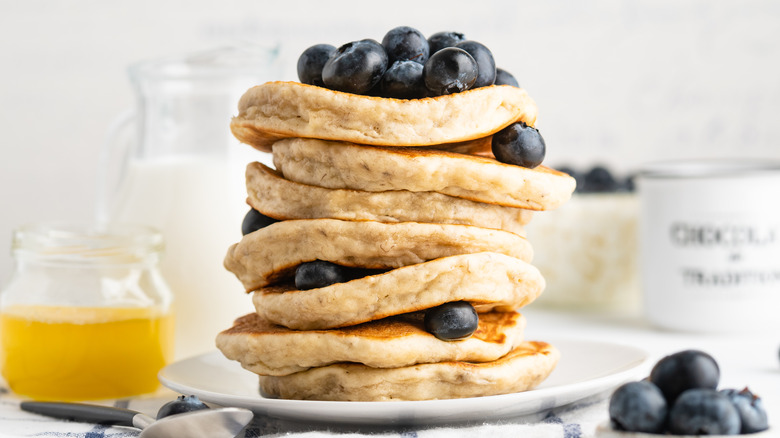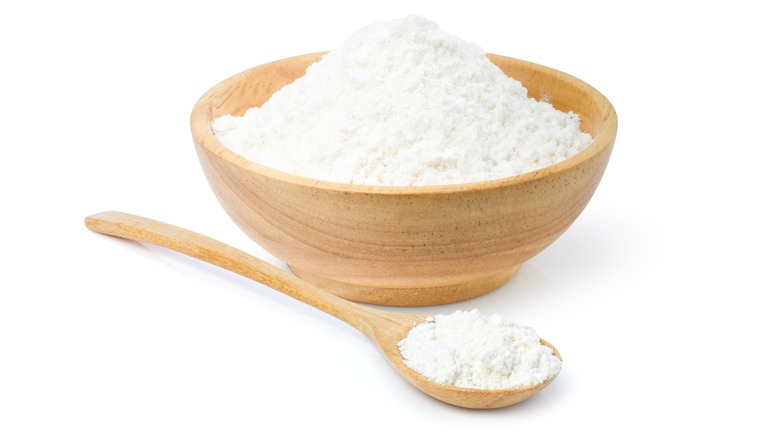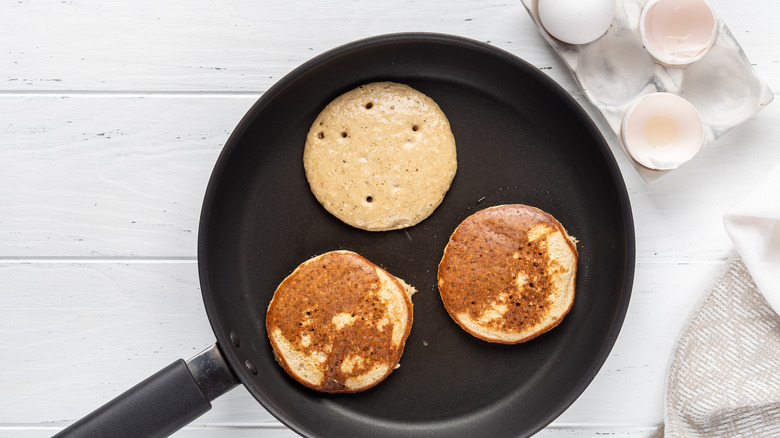The Spatula Mistake You Should Always Avoid When Making Pancakes
Whether you know your pancakes from your flapjacks, one thing we can all agree on is that a pancake breakfast is something special. Whipping up a bubbly batter for pancakes for a crowd usually takes time, which means that this special tradition is reserved for slow mornings and coming together around a table.
Pancakes just might even be one of the oldest forms of food, as well. It's likely that thousands of years ago, early humans were grinding grains and mixing them with water before cooking them over a campfire. While these early recipes were far from Bisquick they made a template for what would come after.
Later on, pancakes would become a tradition for Shrove Tuesday, which was the day before Lent, in which perishable foods like butter, eggs, and milk were used up before the period of religious fasting. Even in the 1800s, true pancake chefs sought to make their cakes lighter and fluffier. Supposedly, chefs would use fresh snow – which contains trace amounts of ammonia — to make their pancakes fluffier before the invention of baking soda (which would change the pancake world forever).
What makes pancakes fluffy
In 1846, baking soda was introduced to the general public. While it's considered one of the most common baking ingredients today, at the time it was revolutionary. Baking soda is a salt that reacts with acids to produce carbon dioxide.
One of the main reasons that pancakes are referred to as "buttermilk" pancakes is that buttermilk was the preferred acid to use in this interaction. When buttermilk and baking soda are combined, they create carbon dioxide gasses that expand in the batter and produce bubbles. These bubbles give some lift to the batter and create light, airy pancakes. One of the reasons that you shouldn't overbeat your pancake batter is because it will actually deflate some of these gasses . Baking soda and buttermilk react the moment they're mixed together, and by continuing to whip the batter, you're destroying many of the first bubbles to form.
You can use whipped egg whites to yield fluffy pancakes as well. This process has the same idea of trapping gasses inside bubbles to make lighter pancakes. It just uses the protein structure of egg whites to trap air instead of creating carbon dioxide.
How to ruin fluffy pancakes
The reason that understanding all of this pancake chemistry is so important is that none of these chemical reactions matters if you make one crucial mistake — pressing down on your pancakes.
We get it, it's tempting to smash those fluffy boys as they bubble up in the pan, but you have to resist this temptation if you want light, airy pancakes. Some folks may think that pressing down on pancakes will give them crispier edges, but they're wrong. All it will actually give you is a stack of thin, dense pancakes that won't get anyone out of bed on a slow morning. "Violate this cardinal rule and the Pancake Police will come knocking at your door," the Original Pancake House writes in jest.
The reason for this is that all of those precious carbon dioxide bubbles that you've worked to preserve up to this point are going to get popped when you start pressing down. Instead, resist that temptation, let your ingredients do all the work, and you'll have lighter, fluffier pancakes.


